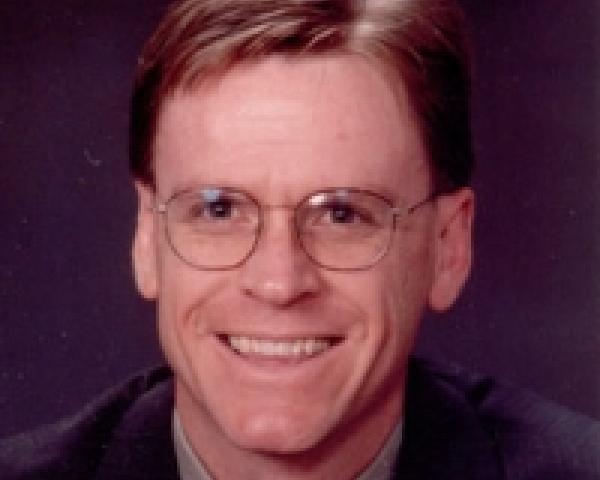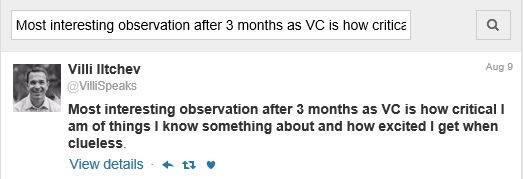Vast Implications of the CCPA
For those who can afford compliance, it will be business as usual. For those who cannot, compliance is a death knell to innovation.

For those who can afford compliance, it will be business as usual. For those who cannot, compliance is a death knell to innovation.

Get Involved
Our authors are what set Insurance Thought Leadership apart.
|
Partner with us
We’d love to talk to you about how we can improve your marketing ROI.
|
As I was reminded recently, there are three aspects of leadership that can benefit from more intentional pauses.

Get Involved
Our authors are what set Insurance Thought Leadership apart.
|
Partner with us
We’d love to talk to you about how we can improve your marketing ROI.
|

Paul Laughlin is the founder of Laughlin Consultancy, which helps companies generate sustainable value from their customer insight. This includes growing their bottom line, improving customer retention and demonstrating to regulators that they treat customers fairly.
Technology is going to reduce the compensation of amateur agents severely because, frankly, who needs an amateur insurance agent?

I have had the opportunity to ask many former Division I college athletes and a few professional athletes how much time they spent practicing. Plenty of articles exist that detail the many hours professional athletes endure practicing, studying film, lifting weights and doing stretches. Professional actors are similar in how they go through hours and hours of practice, readings, run throughs and vocal exercises. An interesting measure is how many hours of practice go into each hour of actual game time. Depending on the sport, the ratios I have calculated and seen range between five and 15 hours of practice and preparation for each hour of actual game time.
Professionals spend a tremendous amount of time practicing and preparing. When I ask producers how much time they spend practicing and preparing per hour of actual sales and client meetings, the answer is usually the opposite. They spend maybe one hour preparing and practicing for every 20 hours of sales and client meetings.
Some producers tell me they do not have time to practice, and, besides, professional athletes are paid much, much more, and the compensation delta is even higher between professional athletes and amateur athletes. Professionals make time to practice so they can earn more. I have found the same effect to be true with producers. True professional producers spend much more time practicing, even reading forms (preparing), than amateur producers.
See also: Do Consumers Trust Their Agents?
A good example of this practice that is always amazing to me is how so many really good professional agents with big books find the time to use coverage checklists with their clients. Yet, in the same agency, other producers do not use checklists; their excuse is always, always the same: Their clients will not give them the time, or they do not have the time. How is it that a producer whose book is three times or even 10 times larger has the time and finds clients who give him or her the time to go through coverage checklists, while those producers with small books never have the time to act professionally? What a weird phenomenon!
Professionals in any occupation always find the time or make the time to practice and study and prepare. People who want to be seen as professionals, but are really just pretenders, never seem to find the time or make the full effort required to attain the skills necessary for success. These people want the recognition and the compensation, without the effort. Nice work if one can get it, and many insurance agents have succeeded doing just that for a long time because consumers do not know what they are buying until they incur an uncovered claim.
The industry is changing, though, and technology is going to reduce the compensation of amateur agents severely because, frankly, who needs an amateur insurance agent? Do companies need to pay full commission to amateurs when they can achieve the same transactional sales results at actual amateurs' wages? That math is pretty easy to figure.
Why should a consumer pay the same price for an amateur agent as they pay a professional agent? In fact, why should a consumer pay an amateur agent anything?
A professional agent, a truly professional agent, is someone who puts in the hours to learn and know the coverages in depth. A professional agent is someone who takes the time to work with clients to identify their needs, and actually does this every year for every renewal. At the very least, the agent makes a genuine effort to meet with clients at least annually to go over their needs, changes in coverages, changes in exposures and changes in their lives and businesses.
Professional agents do not just "BOP" every account. They actually understand what coverages in a BOP need enhancement to provide their clients with the coverages they truly need. An excellent example of an amateur agent is when a producer tells a client that he has automatic cyber coverage in the BOP. At best, such an agent might qualify for flag football.
See also: Changing Point of Sale for Insurance
Is this a harsh statement? Not really, because it is reality, and that agent can change reality by actually practicing and preparing and learning the coverages. These situations are fantastic examples of people being in charge of their own destinies. They can be a pedantic peddler of insurance, be lazy really, or they can endeavor to practice, to study, to prepare and to become a true professional who serves a vital purpose and protects their clients' true well-being. The choice is completely yours, but the idea of actually being a professional while hardly ever practicing and preparing is dead. No more pretending.
Get Involved
Our authors are what set Insurance Thought Leadership apart.
|
Partner with us
We’d love to talk to you about how we can improve your marketing ROI.
|

Chris Burand is president and owner of Burand & Associates, LLC, a management consulting firm specializing in the property-casualty insurance industry. He is recognized as a leading consultant for agency valuations and is one of very few consultants with a certification in business appraisal.
No. Entering into a complex legal contract where significant assets are at stake is not remotely similar to ordering delivery of a burrito.

Recently, I read this article from a venture capitalist: “Can Insurtech Reach Escape Velocity?“ The following passage caught my eye: “In a world where we can summon a car, or our favorite Mexican restaurant’s veggie burrito, at the touch of a button, shouldn’t we be able to get insurance cover for our homes by just providing our address?” This question was reminiscent of one I blogged about two years ago when a “top insurance executive” asked, “If people can buy paper towels on the internet, why not insurance?” The answer to the burrito question is: No. Entering into a complex legal contract where significant assets and income are at stake is not even remotely similar to getting a ride to the airport or ordering delivery of a burrito. I got a homeowners quote from one of these new startups that, according to this article, “gets it,” simply by providing my address. According to the “big data” source, the square footage of the home was 1,200 sq. ft. less than it actually was. Think that might throw off the dwelling coverage limit? Yes, by about $180,000 in this case. A year later, I got a quote from the same startup, and the living area was over 1,000 sq. ft. MORE than it actually was AND the coverage limit was STILL underinsured. I was told for “other structures” the insured had 10% of the dwelling policy limit. But apparently the startup was not aware that one of those structures, a $40,000 boat dock, was not actually on the “residence premises” (it was on Army Corps of Engineers property) and, therefore, according to the insurance contract was uninsured. See also: Is Insurance Like Buying Paper Towels? The startup didn’t ask about any activities the residents were engaged in like serving on an HOA board and a child’s school athletic booster club, which presented exposures that can be covered by some insurers with a policy endorsement. No umbrella coverage was offered. And the list goes on. People who know NOTHING about insurance get all excited about the super cool technology, speed and convenience. That excitement lasts until there is a six-figure (or more) uninsured loss that could have been covered by engaging in proper exposure analysis beyond simply a street address.  Big data is one thing; Big BAD Data is another.
Big data is one thing; Big BAD Data is another.
Get Involved
Our authors are what set Insurance Thought Leadership apart.
|
Partner with us
We’d love to talk to you about how we can improve your marketing ROI.
|

William C. Wilson, Jr., CPCU, ARM, AIM, AAM is the founder of Insurance Commentary.com. He retired in December 2016 from the Independent Insurance Agents & Brokers of America, where he served as associate vice president of education and research.
Progress has mostly been an evolution of technology that has been around a while, but the industry will still look quite different in a decade.

After three intense and exhausting days at InsureTech Connect last week, I’m a little conflicted. It was quite exciting. And there are many fascinating companies and ideas that are truly transforming our industry. But then King Solomon’s words (from the Bible) come to mind – “There is nothing new under the sun.”
I don’t mean to express negative sentiment regarding the state of insurtech and innovation in insurance. Virtually everyone is talking about AI/machine learning. Digital transformation is high on the list of activities and discussions. New options for distribution, the evolution of ecosystems and the continuing progress of the new era of computing are compelling topics. And the potential and progress of transformational technologies like the IoT, autonomous vehicles and wearables fueling But I still wonder whether I saw anything fundamentally new at ITC or whether we are just seeing increasing maturity in the insurtech movement.
There were a few announcements and companies that raised some eyebrows, to say the least. Here is my list of those that the industry should take note of:
So, I suppose any evaluation depends on your definition of “new.” I prefer to think of our progress as the evolution and maturity of ideas and technology solutions that have been around for a while. But now they are real. And that is a great thing for the industry.
The last few years have been revolutionary for insurance in some ways, but based on the trajectory that I am seeing at ITC and elsewhere, there is tremendous innovation and transformation yet to come. This industry is likely to look quite different a decade from now.
Get Involved
Our authors are what set Insurance Thought Leadership apart.
|
Partner with us
We’d love to talk to you about how we can improve your marketing ROI.
|

Mark Breading is a partner at Strategy Meets Action, a Resource Pro company that helps insurers develop and validate their IT strategies and plans, better understand how their investments measure up in today's highly competitive environment and gain clarity on solution options and vendor selection.
Insurers can opine about healthcare reform but should not dress opinions with the veil of impartiality, as if they have no conflicts of interest.

Get Involved
Our authors are what set Insurance Thought Leadership apart.
|
Partner with us
We’d love to talk to you about how we can improve your marketing ROI.
|
In a competitive field, the thinking goes, it’s best to cover as many industries as possible, but the reverse is often true for agents and brokers.

Get Involved
Our authors are what set Insurance Thought Leadership apart.
|
Partner with us
We’d love to talk to you about how we can improve your marketing ROI.
|

The best description of last week's InsureTech Connect extravaganza in Las Vegas may have come from an acquaintance who said, "ITC began three years ago as Craiglist, became Tinder and is now something like LinkedIn."
The reference to ITC-as-Tinder may be a bit spicy, but I think he pretty well captured the arc of the conference as it moved from 1,500 attendees in the first instantiation, in 2016, to the 7,000 souls there last week. ITC began in a sort of "help wanted" mode, evolved into a matchmaker for insurtechs and incumbents and now has established itself as a pretty polished hub for those who want to connect about innovation in insurance.
The shift suggests that the industry as a whole is making progress, and I think I saw that on the floor and in my meetings. But don't take my word for it. Hear from Guy Fraker, our chief innovation officer, who was in the thick of things more than I was, including as moderator of a panel discussion. Here are Guy's observations about industry themes, the most interesting companies he saw and the best advice from his panel:
"The overall quality of innovation in the industry has empirically improved. This year, when a carrier approached me [Me: Conferences are a great place to get free advice from Guy.], it was with a specific issue. 'How do I get unstuck?' 'How do we do this one thing?' In past years at ITC, the carriers would say, 'I'm not sure about this whole innovation thing. Is insurtech going to go anywhere?'
"My biggest concern is that we still have too few companies looking at all this through the lens of the customer. They think about making more money, being more efficient and improving distribution. But they really need to figure out how to become a company that they'd personally like to do business with. [Me: I'd add that carriers still seem to be ignoring some low-hanging fruit even on the efficiency side. An executive told me he thinks that 80% of payments to customers are still made via paper check—a great way to inconvenience customers while inflating costs.]
"The quality of the early-stage companies is definitely higher. They're more seasoned. They have a deeper understanding of the industry. There are a lot of startups with good specs for products.
"One of the most interesting companies I visited with was Plnar, which lets you use your phone to take a short video of a room and then calculates all the dimensions. The scary but potentially really powerful part is that the video captures all your stuff, which Google and Amazon would be more than happy to use optical recognition to sort through, giving them massive amounts of data on who owns what where.
"There's also no way to ignore the miles-ahead position that Tim Attia has put Slice in as a legitimate go-to-market engine for carriers that want to introduce products quickly.
"We could use something similar for startups. But there is a new trend that may help: tech brokers. They don't have a physical incubator, and they don't invest money like venture capitalists, but they vet companies in person and then go try to find a match, whether an acquirer, a partner, an investor or customers. Kobi Bendelak is certainly doing that at InsurTech Israel for startups there, and others are popping up. There's even a new group in Brooklyn.
"Here's the one thing that hasn't changed: At ITC, as at all the other conferences where I speak, everybody hates Lemonade. Everybody. They must really be on to something."
Cheers,
Paul Carroll
Editor-in-Chief
Get Involved
Our authors are what set Insurance Thought Leadership apart.
|
Partner with us
We’d love to talk to you about how we can improve your marketing ROI.
|

Paul Carroll is the editor-in-chief of Insurance Thought Leadership.
He is also co-author of A Brief History of a Perfect Future: Inventing the Future We Can Proudly Leave Our Kids by 2050 and Billion Dollar Lessons: What You Can Learn From the Most Inexcusable Business Failures of the Last 25 Years and the author of a best-seller on IBM, published in 1993.
Carroll spent 17 years at the Wall Street Journal as an editor and reporter; he was nominated twice for the Pulitzer Prize. He later was a finalist for a National Magazine Award.
Although it may seem that flood is just flood, fluvial, pluvial and storm surge--often in combination--cause different levels of damage.

 Figure 1: Contains data from the FEMA National Flood Hazard Layer.
However, when we look at its location on the JBA flood map, we can see some differences in analysis. The JBA flood map identifies this location as at very severe risk to flood (Figure 2, below), from both fluvial and storm surge flooding, whereas using FEMA data alone would not account for either flood type or differentiate between fluvial and pluvial flood. Accessing data sources in addition to FEMA helps provide a more comprehensive understanding of the risk.
Figure 1: Contains data from the FEMA National Flood Hazard Layer.
However, when we look at its location on the JBA flood map, we can see some differences in analysis. The JBA flood map identifies this location as at very severe risk to flood (Figure 2, below), from both fluvial and storm surge flooding, whereas using FEMA data alone would not account for either flood type or differentiate between fluvial and pluvial flood. Accessing data sources in addition to FEMA helps provide a more comprehensive understanding of the risk.
 Figure 2
The complex interplay between flood types
The risk is particularly high for hurricane-prone areas like Jacksonville, where storm surges often coincide with inland flooding. It’s important to represent this complex interplay during the mapping process instead of tackling each flood type separately. JBA’s storm surge mapping has been developed in partnership with leading hurricane modelers Applied Research Associates, ensuring that hurricane activity is fully accounted for. Additionally, surge data has been used to modify JBA’s inland flood mapping process to reflect the fact that, during a hurricane, rivers can’t flow out to sea as they can in normal conditions. Flood waters then back up, exacerbating fluvial flooding. For insurers to obtain a complete understanding of the hazard, flood maps must fully represent this relationship.
Even with FEMA recently re-mapping the area as a FEMA A Zone, demonstrating that the area is at risk to flood, the drivers of the flood are not clear. As such, underwriting against the FEMA map alone could misrepresent the insurance coverage required.
See also: FEMA Flood Maps Aren’t Good Enough
It’s clear that having a view of the different drivers of flood risk is vital for effectively understanding and underwriting the risk, especially in areas where hurricanes can be a major source of flood-driven losses.
Figure 2
The complex interplay between flood types
The risk is particularly high for hurricane-prone areas like Jacksonville, where storm surges often coincide with inland flooding. It’s important to represent this complex interplay during the mapping process instead of tackling each flood type separately. JBA’s storm surge mapping has been developed in partnership with leading hurricane modelers Applied Research Associates, ensuring that hurricane activity is fully accounted for. Additionally, surge data has been used to modify JBA’s inland flood mapping process to reflect the fact that, during a hurricane, rivers can’t flow out to sea as they can in normal conditions. Flood waters then back up, exacerbating fluvial flooding. For insurers to obtain a complete understanding of the hazard, flood maps must fully represent this relationship.
Even with FEMA recently re-mapping the area as a FEMA A Zone, demonstrating that the area is at risk to flood, the drivers of the flood are not clear. As such, underwriting against the FEMA map alone could misrepresent the insurance coverage required.
See also: FEMA Flood Maps Aren’t Good Enough
It’s clear that having a view of the different drivers of flood risk is vital for effectively understanding and underwriting the risk, especially in areas where hurricanes can be a major source of flood-driven losses.
Get Involved
Our authors are what set Insurance Thought Leadership apart.
|
Partner with us
We’d love to talk to you about how we can improve your marketing ROI.
|
The key question: Can there be a lasting digital transformation without an education strategy to support it?

Get Involved
Our authors are what set Insurance Thought Leadership apart.
|
Partner with us
We’d love to talk to you about how we can improve your marketing ROI.
|